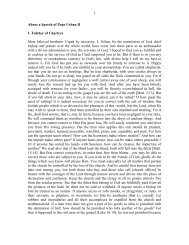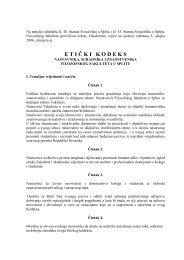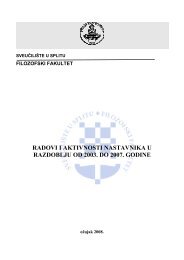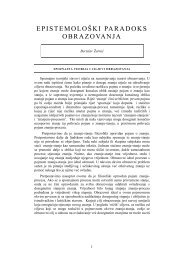Understanding Human Communication
Understanding Human Communication
Understanding Human Communication
You also want an ePaper? Increase the reach of your titles
YUMPU automatically turns print PDFs into web optimized ePapers that Google loves.
lem solver, information giver, and so on), either through competition or criticism.<br />
Sometimes the threat is real, and sometimes it’s only imagined, but in<br />
either case the group must neutralize it or face the consequences of reduced<br />
cohesiveness.<br />
5. Interdependence of Members Groups become cohesive when their<br />
needs can be satisfied only with the help of other members.When a job can<br />
be done just as well by one person alone,the need for membership decreases.<br />
This factor explains the reason for food cooperatives,neighborhood yard sales,<br />
and community political campaigns. All these activities enable the participants<br />
to reach their goal more successfully than if they acted alone.<br />
6. Threat from outside the Group When members perceive a threat to the<br />
group’s existence or image (groups have self-concepts, just as individuals<br />
do), they grow closer together. Almost everyone knows of a family whose<br />
members seem to fight constantly among themselves—until an outsider criticizes<br />
one of them. At this point, the internal bickering stops, and for the moment<br />
the group unites against its common enemy.The same principle often<br />
works on a larger scale when nations bind up their internal differences in<br />
the face of external aggression.<br />
7. Mutual Perceived Attractiveness and Friendship The factor of mutual<br />
attraction and friendship is somewhat circular because friendship and mutual<br />
attraction often are a result of the points just listed, yet groups often do become<br />
close simply because the members like each other. Social groups are a<br />
good example of a type of group that stays together because its members enjoy<br />
one another’s company.<br />
8. Shared Group Experiences When members have been through some unusual<br />
or trying experience,they draw together. This explains why soldiers who<br />
have been in combat together often feel close and stay in touch for years after;<br />
it also accounts for the ordeal of fraternity pledging and other initiations.Many<br />
societies have rituals that all members share, thus increasing the group’s cohesiveness.<br />
It’s important to realize that the eight factors just described interact with one<br />
another, often in contradictory ways. For instance, members of many groups are<br />
good friends who have been through thick and thin together (cohesiveness<br />
builders),but they find themselves less dependent on each other than before and<br />
now struggle over playing certain roles.In cases like this,cohesiveness can be figured<br />
as the net sum of all attracting and dividing forces.<br />
CRITICAL THINKING PROBE<br />
THE PROS AND CONS<br />
OF COHESIVENESS<br />
CHAPTER 9 SOLVING PROBLEMS IN GROUPS 307<br />
CULTURAL IDIOM<br />
bickering: quarreling<br />
through thick and thin: through<br />
the good times and the bad<br />
1. Based on the information on pages 305–307 of this chapter and your own experiences,<br />
give examples of groups who meet each of the following descriptions:<br />
a. A level of cohesiveness so low that it interferes with productivity<br />
b. An optimal level of cohesiveness<br />
c. A level of cohesiveness so high that it interferes with productivity<br />
2. For your answers to a and c, offer advice on how the level of cohesiveness could be adjusted<br />
to improve productivity.<br />
3. Are there ever situations where maximizing cohesiveness is more important than maximizing<br />
productivity? Explain your answer, supporting it with examples.

















